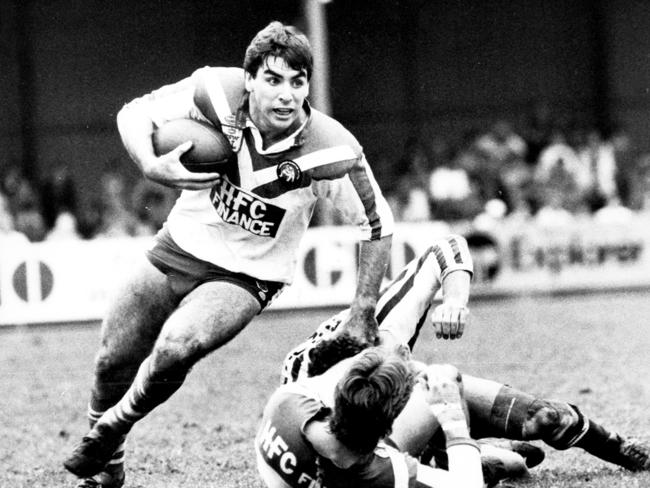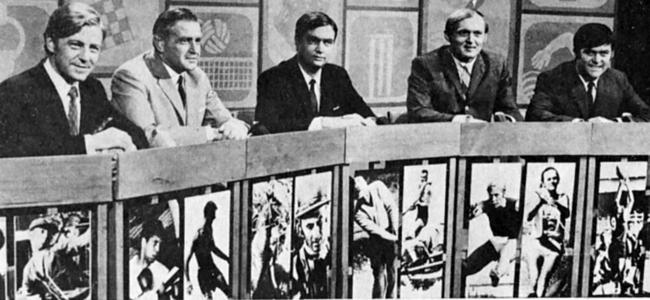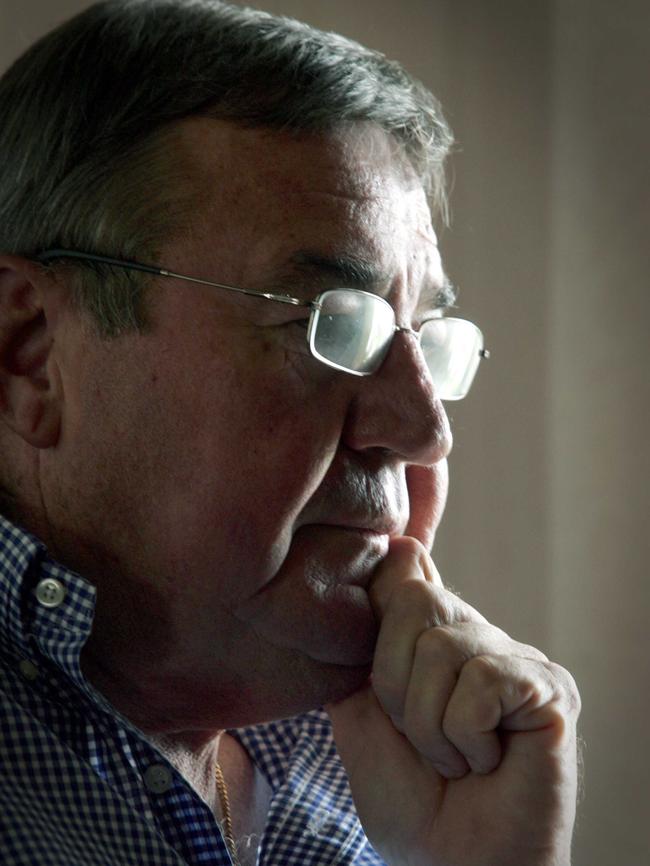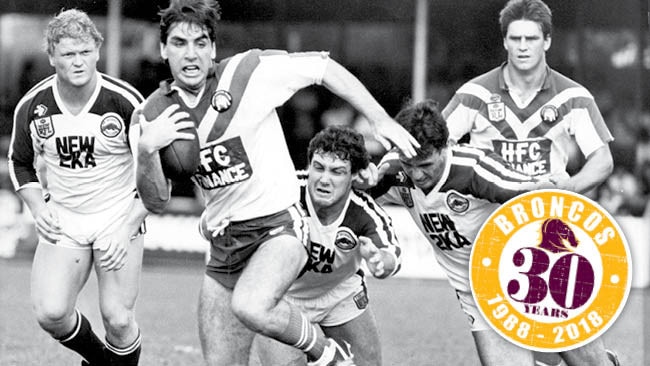BY THE end of the 1983 BRL season, administrators and the media were trying to come to terms with a dramatic fall-off in attendances, highlighted by just 25,000 rolling up for the grand final between Easts and Redcliffe – 11,000 fewer than the previous year.
The televised Sydney premiership was taking its toll, and The Courier-Mail’s Lawrie Kavanagh wrote that the BRL faced its moment of truth.
Part 1: League stars fly south
“There is no looming threat from any other code – indeed any other sport – but these are worrying times, as officials ponder the drop in recent gates,” pondered Kavanagh.
There was little sympathy for the BRL from the bush, with Brisbane clubs raiding country areas, in particular north Queensland.
Noted television commentator George Doniger, who called his last season in 1982 at Channel O (Now Channel 10) alongside Billy J. Smith, said he had not foreseen the demise of the Brisbane competition.
“I thought it would continue for many more years,” said Doniger, the BRL’s leading pointscorer for Brothers in 1960.
“But when there was talk of private ownership in a new national competition, it was obvious Brisbane had to have at least one club.”
Doniger was a panel member of the very first Sportscene program on Channel 7, on Mother’s Day 1970, with Rod Gallegos the host and The Courier-Mail’s rugby union writer Frank O’Callaghan the other member.
The program highlighted local sport, in particular rugby league, with state forward Reg Cannon the first guest.
It was so popular it had expanded from half an hour to three-and-a-half hours by the mid-1980s, with the BRL occupying the best part of the first hour.
In 1982, The Daily Sun joined the The Courier-Mail, The Telegraph and The Australian in a cut-throat newspaper market, which also featured two Sunday papers – The Sunday Mail and The Sunday Sun.
All six papers tried to outdo each other in their coverage of rugby league, sending reporters to places near and far, especially during the state league.

It was all hands on deck, with former Wallabies skipper Andrew Slack, noted rugby union writer Wayne Smith, future swimming writer Nicole Jeffrey and future television identity Cameron Williams among those seconded to cover league fixtures.
The “local” rugby league never had it so good. If you played first grade in Brisbane, you were somebody.
The QRL even tried to emulate the VFL Record, copying its format for the match-day program, bringing out a 48-page extravaganza.
There was only one problem – they didn’t sell any advertisements, and the program was soon cut back to 32 pages.
On the opening night of the 1982 State League season at North Ipswich Reserve, thousands of programs were dispatched from QRL headquarters in Brisbane, to be sold to an expected capacity crowd.
Someone forgot to tell Ipswich officials and as the game kicked-off, with everyone in their seats, the programs remained in the cardboard boxes in which they were delivered.
There were no such hiccups “down south”, or so it seemed, and the lure of the “Sydney competition” was too great for many Brisbane footballers.

Michael Hagan was a Wests Mitchelton junior, but went straight to Sydney, bypassing the BRL.
“I played one under-18 trial for Wests,” Hagan said.
“I had been following the Sydney comp since I was eight or nine. My brother, Bob had played for Canterbury (after playing for Easts in Brisbane in the 1960s).
“My thoughts were that it was the best competition at that time, and if you wanted to test yourself, that’s where you had to be. I could always come back to Brisbane if things didn’t work out.
“I went to the Brisbane grand finals in 1975 and ‘76 when Wests won, and I had a high regard for those teams, and players like Geoff Richardson and Harry Cameron. Harry coached me at Mitchy.
“My brother-in-law Rod Sellars played for Wests, and featured in a Huttons Footy Franks television advert.
“So I don’t mean any disrespect to Brisbane, but there was no tougher physical and mental test in rugby league, week-in week-out, than the Sydney competition.”
Still, there was nothing soft about the BRL.
That great warrior, Tom Raudonikis, was knocked cold several times as captain-coach of Brothers, and called it quits at season’s end.
Souths, the 1981 premiers and beaten grand finalists in 1982, were eliminated by Valleys in the 1983 minor semi-final.
Magpies coach Bob McCarthy resigned after four seasons at Davies Park.

Wayne Bennett, who had been cooling his heels at Souths Juniors, beat three other applicants for the Souths first grade job, and set his sights on becoming a career coach.
Four years later, the Broncos consortium would consider Bob McCarthy as their inaugural coach, before ultimately choosing Bennett.
Queensland skipper Wally Lewis played his last game for his beloved Valleys when they were beaten 28-10 by Redcliffe in the 1983 preliminary final.
Lewis did not want to leave Valleys, because of the friendships he had forged in his six years at the club.
But Valleys president Dr Tom Dooley told him the club could not pay him for 1983, and there were no guarantees about the following season.
Wynnum-Manly were being lauded as the most progressive club in the competition, and appeared to be financially sound.

But by November 1983, the Seagulls were going cap-in-hand to the public for cash.
Nevertheless, Lewis signed with the bayside club, where his father, Jim, had once been first grade coach.
In an interview that season, Wally rated Manly-Warringah’s big-hitting forward Terry Randall his favourite all-time player, but Brisbane Wests lock Norm Carr was his most respected rival.
Like most Queensland league fans, Wally closely followed the Sydney premiership.
In the off-season, Wally and younger brother Scott, who also would become an inaugural Bronco, played with English club Wakefield Trinity in an eight-match stint, which earned Wally £1000 an appearance – win or lose.
He would not get that sort of money again until the Broncos’ first season, when the players were paid an unprecedented $1500 win bonus.
But the losing pay was only $50.


Add your comment to this story
To join the conversation, please log in. Don't have an account? Register
Join the conversation, you are commenting as Logout
‘You’ve got me, I’m drunk’: Broncos legend learns fate over DUI charge
A Broncos legend has learned his fate after being caught driving at almost four times the legal blood-alcohol limit, telling police “you’ve got me, I’m drunk”.
Dolphins star on track to become NRL’s next $1m man
The Dolphins are ready to throw the checkbook at one of their off-contract stars after declaring him a “priority” re-signing, a move which could make him the NRL’s next $1 million man.